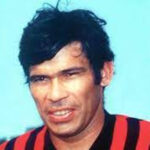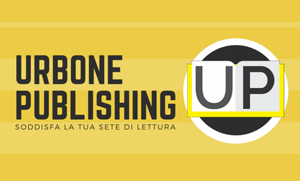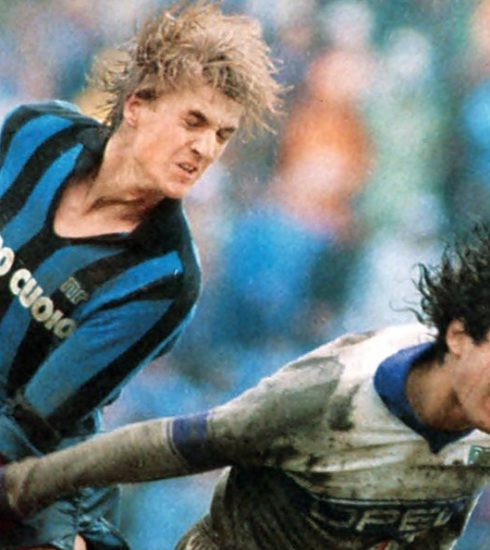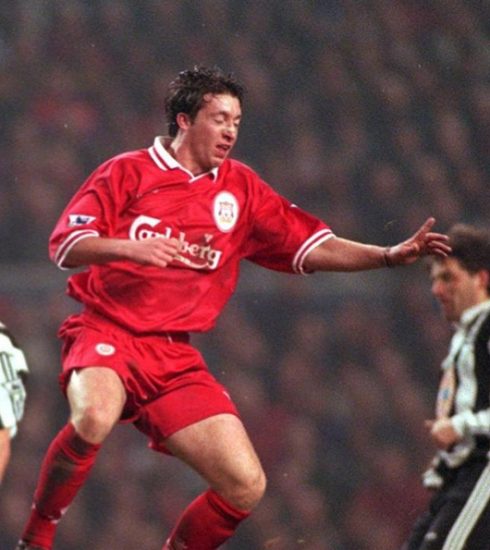NESTOR COMBIN: Meroni, Rocco and a bloody cup


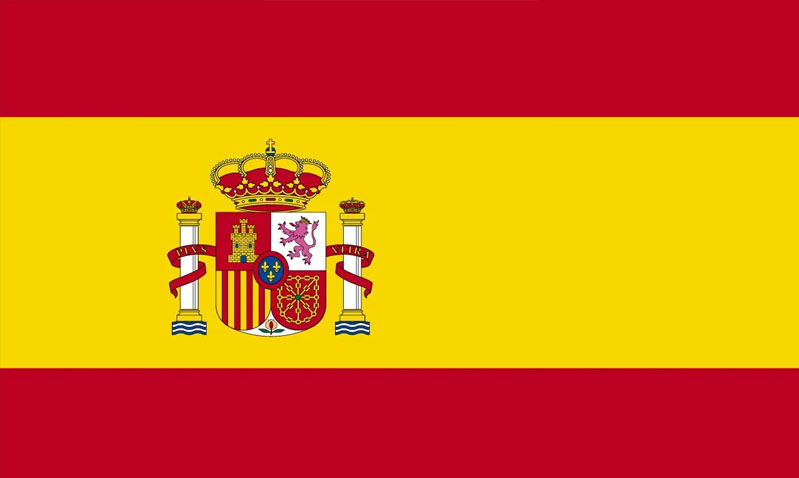
I can’t stop the tears.
My best friend, the kindest and sweetest boy on this earth, the purest talent I have ever seen on a football pitch, is gone.
Only four days have passed since that damn Sunday night when a car ran over Luigino and with him a good part of the future of this Club.
A Club that seems to have it in its DNA to have its favourite sons taken away.
Less than 20 years ago it was the turn of the boys up at the Basilica and on Sunday night it was Luigino’s turn, the most beloved of them all.
It is since that evening that I have a stomach ache, that I can barely eat, that I struggle to sleep.
It is since that evening that I think back to those moments, the last ones Luigino and I spent together.
And then it comes back to me when Luigino invites me to have coffee with him and Poletti, me telling him no, that I am too tired.
And Luigino teasing me, telling me to enjoy it a little more since “Nestor, scoring three goals like you did today against Sampdoria will never happen again!”
… me giving him a good-natured slap on the wrist and then sending him … where you can easily imagine !
Not even half an hour later Luigino’s body was on that asphalt.
No, I’m sorry.
I just can’t make it back in three days.
Yes I know, there’s the derby.
The game our fans have been waiting for all season
The derby, against “those with the black and white striped jersey”.
But I just can’t do it.
It’s pointless for them to insist.
Teammates, managers and fans.
How can they ask me?
How can they think I’m able to take the field pretending nothing happened ?
Pretending that that lifeless body on the asphalt of Corso Re Umberto was not that of my best friend?
Luigino was almost a brother to me.
When he wasn’t with his beloved Cristiana or painting in his attic, we were practically always together.
Either with our respective partners or alone, like when after training we would stop to play bocce or billiards in our bar near via Filadelfia, together with many Toro fans with whom we had bonded.
And now I’m supposed to be back on the pitch, without him, to run after a ball …
They can also talk to me about contracts to be respected, possible fines, moral obligations …
All I know is that a few hours ago they buried my best friend and that no one can force me to think about a stupid game of football.

On that Sunday, 22 October 1967, just seven days after Luigi Meroni’s death, Nestor Combin took the field regularly.
And he would play as he had never played before and as he would never play again in his albeit excellent career.
Torino will win that derby, the first without Gigi Meroni, 4 goals to 0.
Nestor Combin scored three of those goals and the last one was scored by a young boy named Alberto Carelli, who took the field that day wearing the number 7 shirt, that of ‘Luigino’ Meroni.

Nestor Combin was born in Las Rosas, province of Santa Fe in Argentina on 29 December 1940.
As a boy, he moved with his family to France, and began playing for Olympique Lyon, of which he soon became the starting centre forward, scoring with great regularity and impressing with his physical strength, his courage and above all his great progression, which earned him the nickname ‘La Foudre’, or ‘the lightning bolt’.
In 1964, at the end of the season, his Olympique played a friendly against Real Madrid.
It is the Real Madrid of Di Stefano, of Gento, of Puskas, of Santamaria and of Amancio who had just lost the Champions Cup final against the Inter of the late Picchi, of Mazzola, of Corso, of Suarez and of Jair.
It is a Real at the end of the cycle and when in this friendly Nestor Combin scores a beauty of three goals against the ‘Whites’ of Miguel Munoz and President Santiago Bèrnabeu Yeste, the latter decides that Nestor Combin has what it takes to become Real’s new number ‘9’. With him, he also intends to acquire ward mate Fleury Di Nallo, who has an almost telepathic understanding with Combin.
The idea of becoming the replacements for the likes of Di Stefano (who would leave Real Madrid that summer to join Espanyol Barcelona) and Puskas was simply irresistible to the two young strikers.
The cold shower arrived immediately, however.
However, Lyon president Maillet has to turn down Real’s lavish offer. ‘I have already promised Combin to Juventus and I have already collected a generous advance’.
For Combin it is a knockout blow.
“Me to Juventus? And I find out now?” was the reaction of the Argentine-born striker.
But then he remembered that at Juventus in those years there was his absolute idol, the one he used to admire in the stands of the Monumental as a boy: Omar Sivori.
When Combin arrived at Juve, however, the team was in a transitional phase.
The 4th place finish of the previous season led to a half revolution in the Bianconeri’s house.
On the bench came a Paraguayan coach, Heriberto Herrera, with modern but very strict methods.
Combin had an unhappy season, full of injuries and poor in goals (only 7 in 24 games).
With Heriberto Herrera he did not bond and at the end of the season Juventus put Combin back on the market, hoping to bring home at least part of the substantial investment.
Of convinced buyers, however, not even a shadow.
Combin wanted to return to France, but Juventus were the owners and ‘masters’ of the card and sent him out on loan to Varese for a season.
‘Team of wonderful boys’, Combin would always say, ‘but playing football is something else …’.
In 16 appearances he only scored 2 goals and for Combin it seemed the end of the road, at least in the Italian league.
But then ‘he’ arrives: the great, immense ‘Paron’ Nereo Rocco, unique in his ability to go and rescue players either judged to be at the end of their careers or not up to playing for big teams.
“But what are you doing here in a team like Varese?” the ‘Paron’ tells him.
Combin explains the situation to him, the loan issue, his difficulties with players who don’t know how to serve him properly, etc.
In the end, Rocco took him with him to Turin, the Granata side… without even this time giving up his frankness and honesty: ‘Ohi Indio, but know that I already have the starters, so you have to get busy.
So, after just one season, Combin returned to Turin, this time with the city’s ‘poor’ team but with which the bond and affection were immediate.
Just a few games later and Combin earned himself a starting place, also because Rocco has always let those who deserve to play play, in defiance of hierarchies and real or fictitious positions of privilege.
His understanding with his teammates is immediate. Particularly with director Ferrini and his teammates Facchin and, above all, Gigi Meroni, an imaginative winger with an excellent technique with whom Nestor formed a very close relationship, on and off the pitch.
His first season at Toro ended with a good 7th place finish, but the premises were there for Torino to return to the top of national football soon.
The following year, however, began in the worst of ways: Nereo Rocco returned to AC Milan, the team with which he had won the Champions Cup only 4 years earlier, and on the Toro bench sat Edmondo Fabbri, the great coach who took Mantova from Serie A to Serie D in only 4 seasons and who was, however, veteran (and scapegoat) of the unsuccessful Azzurri expedition to the English World Cup the year before.
The start in the championship was up to expectations but after four matches and a few hours after the splendid victory over Sampdoria (with Combin’s hat-trick) came the tragedy that would mark Combin himself and all the Granata people forever.
The death of their favourite son, the one who was perhaps the most reckless, the most fragile and good-natured… and for this reason even more loved: Luigi Meroni.
Torino confirmed their seventh place finish of the previous season but went on to win the Coppa Italia, bringing a trophy back into the club’s trophy cabinet after almost twenty years.
Nestor Combin stayed another season at Torino continuing to play at a very high level and scoring regularly.
At that point, however, the court of Nereo Rocco, who had just won a splendid Champions Cup with AC Milan, became pressing.
A new striker was needed to replace Kurt Hamrin, who had moved to Napoli, and who could complete an already exceptional attack with Sormani’s sublime technique and Pierino Prati’s incredible acrobatic skills.
Rocco’s fantastic sense of humour did not fail to show itself on that occasion either.
“Every time I scored a goal in the league with Toro, Rocco would call me out, scolding me and swearing his way,’ Combin recalls with amusement. ‘Mona, but if you keep scoring goals and playing so well, how can I buy you? You cost me too much !!!”
In the summer of 1969 Nestor Combin arrived at Milan.
After only a few months he was playing for the Intercontinental Cup.
The Rossoneri’s rivals were the Argentinians of Estudiantes, a team coached by the ‘resultadista’ Osvaldo Zubeldia, capable of winning the Championship, the Libertadores Cup and the Intercontinental Cup (in the final against Manchester United of Best, Law and Charlton) in the previous season.
Estudiantes is an organised team, excellently prepared physically and with some outstanding individualities such as strikers Conigliaro, Echecopar, defensive director Carlos Bilardo (World Champion coach with Argentina in 1986) and above all ‘la bruja’ (the witch) Juan Ramon Veron (Juan Sebastian’s father).
The first leg at the San Siro was a Rossoneri monologue.
Gianni Rivera directed operations in the middle of the pitch and Sormani, Combin and Prati created havoc in the Argentine defence, unable to contain Milan’s superiority.
Sormani scored a brace and Combin scored the other goal in a clear 3-0 victory.
Milan thus put a big mortgage on the virtual title of ‘Club World Champion’, but no one at that moment could imagine what awaited Rivera, Prati and companions in the return match.
Estudiantes (who are from Mar de la Plata) decided to play the return match in Buenos Aires, choosing the fiery bowl of the Bombonera.
What will happen in this match represents one of the greatest shames in the history of world football and an indelible stain in the history of Argentinean football.
For Estudiantes it is not a football match.
It is a total and shameful manhunt.
The harshness of the Argentine players’ interventions is devastating from the start, becoming increasingly out of control when they realise that the referee of the match, the Chilean Massaro, allows them practically anything.
Then, when at the half-hour mark Gianni Rivera, with a goal of rare beauty, put the Rossoneri ahead, for Estudiantes there was only one objective: to do as much harm as possible.
A few minutes pass and the first to pay the price is the Rossoneri bomber Pierino Prati, one who the more the battle becomes heated, the more he exalts himself.
But even he could not defend himself first from the hard entrance of the full-back Manera and above all from the vile kick to the back that he received from the opposing goalkeeper Poletti while ‘Pierino the Plague’ himself was still on the ground.
Estudiantes managed to overturn the result but two to one was too little to overturn the outcome of the double.
At that point, the main target became the ‘traitor’ Combin, who had fled Argentina at the height of the military regime (following the coup d’état organised by the Navy in 1955 with the subsequent flight of President Peron to Paraguay).
The vengeance, also in this case blatant and shameful, came at the hands of the Argentine goalkeeper Poletti who with a violent punch broke Combin’s nose and cheekbone, forcing him to leave the field in a state of semi-consciousness.

And, incredible as it may seem, the worst was yet to come.
The game has just finished, Combin is still in the locker room undergoing treatment by the Milan doctors when four policemen invite him to come out and join them.
Combin is taken to the police station in Buenos Aires and placed under arrest; the charge is that of avoiding military service in Argentina.
The indignation of the militant group is at its height.
There seems to be no limit to the shame, intimidation and violence.
Rocco is furious.
The Milan team is already at the airport but the Paron is adamant: no one will return to Italy unless Nestor Combin is also part of the group. Embassies and various prominent politicians get involved.
Finally this grotesque situation is unblocked and Nestor Combin, still in a precarious physical condition, will return to Italy with his teammates.

He will remain at AC Milan for another two seasons without, however, being able to recapture the glory of his Granada tenure.
In the summer of 1971 he would return to France, first to Metz and then to Red Star Paris, returning to score regularly in a league that was in any case of a lower level and also perhaps less obsessed from a defensive point of view as our football was then.
His best years, however, were here with us, in Italy, where he left many memories and much affection.
Especially in Turin.
… although two nights were and will forever remain two indelible scars in the history of ‘foudre’, Nestor Combin from Buenos Aires.


